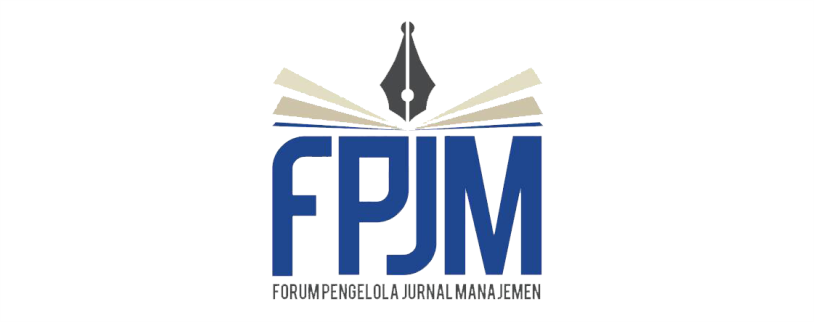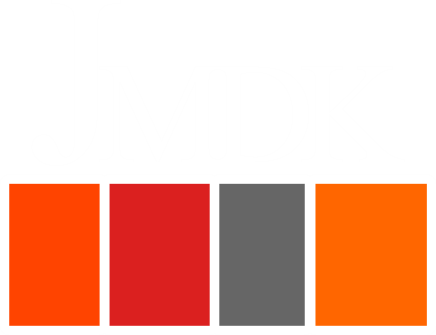Menyingkap Rahasia di Balik Runtuhnya Lembaga Keuangan Mikro ‘Bertopeng’ Syariah
DOI:
https://doi.org/10.26905/jmdk.v6i2.2240Keywords:
BMT (Baitul Maal Wat Tanwil), Collapse, Sharia Microfinance Institusions, SecretAbstract
This study aims to explain the reasons behind the bankruptcy of BMT (Baitul Maal Wat Tanwil) PSU Malang with case study approach. The data are collected through documentation and interviews. The interviews are conducted on five informans namely informan A, B, C, D and E. The results show that the bankruptcy of BMT PSU is caused by internal factors and external factors. Internal factors causing bankruptcy of BMT PSU are: unproductive fund management, bad credit (financing), fraud by employees, business loss, too high percentage of profit sharing, lack of good corporate governance (GCG) and weak internal control. Externals include: lack of security guarantees on customers' funds, economic pressures, lack of supervision and guidance from relevant agencies, as well as the onslaught of stronger new competitors. The findings of this research related to the causes of the bankruptcy BMT PSU, is expected to be useful  for practitioners and the government in preparing strategies for strengthening BMT in the future.
https://doi.org/10.26905/jmdk.v6i2.2240
Â
Downloads
References
Al-Qur’an
Ahmed, H. (2002). Financing Micro Enterprises: An Analytical Study of Islamic Microfinance Institutions. Journal of Islamic Economic Studies, Vol.9. Issues 2.
Albrect. W. Steve. (2012). Fraud Examination. Canada: South Western Chengage Learning.
Anoraga., B. (2015). Agency Problem in Financing: The Case of Islamic Coorporation (BMT) in Indonesia. Master Thesis. Islamic Finance and Management at Durham University, United Kingdom.
Bank Indonesia. (2018). BI 7-day(Reverse) Repo Rate. Diakses dari http://www.bi.go.id/id/moneter/bi-7day-RR/data/contents/Default.aspx.
Blanque, P. (2003). Crisis and Fraud. Journal of Financial Regulation and Compliance, Vol.11, No.1,pp. 60-70.
Chowdhury, S. (2006), Creating an Islamic Microï¬nance Model: The Missing Dimension, Dinar Standard: Business Strategies for the Muslim World, New York, NY
Darsono & Ashari. (2005). Pedoman Praktis Memahami Laporan Keuangan. Yogyakarta : Andi Yogya.
Djazuli, A., & Janwari, Y. (2002). Lembaga-Lembaga Perekonomian Umat (Sebuah Pengenalan). Jakarta: Raja Grafindo Persada.
Dorminey, J., Fleming, A.S., Kranacher, M.J., & Riley, R.A.Jr. (2012). The Evolution of Fraud Theory. American Accounting Association, Vol.27, No.2, pp. 555–579.
FCGI. (2001). Peranan Dewan Komisaris dan Komite Audit dalam pelaksanaan Corporate Governance. Seri Tata Kelola Perusahaan. Jilid II. Edisi ke – 2 Jakarta.
Ganesan, S. (1994). Determinants of Longterm Orientation in Buyer-SellerRelationship. Journal Marketing, Vol.58, pp. 1-19.
Ghofur, A. (2016). Konsep Riba dalam Al-Qur’an. ECONOMICA, Vol.7, No.1, pp. 1-26.
Ghofur, M. (2007). Potret Perbankan Syariah Indonesia Terkini. Yogyakarta: Biruni Press.
Hadiwiyono, P.S., & Panjaitan, T.W.S. (2013). Perancangan Standard Operating Procedure (SOP) Departemen Human Resources (HR) Di PT. X. Jurnal Titra, Vol.1, No.2, pp. 227-232.
Harling, K. (2002). An Overview of Case Study. This Paper supports a similiarly titled discussion that Harling Conducted at the learning workshop,†Case Studies: Their Future Role in Agricultural and Resource Economics, “ The American Agricultural Economics Association, Long Beach, California, July 27, 2002.
Huang, X., Iun, J., Liu, A., & Gong, Y. (2009). Does Partisipatif Leadership Behaviour on Psycological Empowerment and Organizational Commitment in Chinese State Owned Enterprise: The Moderating Role of Organizational Tenure. Asia Pasific J.Manage, Vol.2, No.3, pp. 345-367.
Ikopin. (2015). UU Republik Indonesia No. 25 tahunh 1992 tentang Perkoperasian. Diambil dari http://www.ikopin.ac.id/wp-content/uploads/2015/07/UU-Nomor-25-tahun-1992-tentang-Perkoperasian.
Janwari, Y. (2015). Lembaga Keuangan Syariah. Bandung: PT.Remaja Rosdakarya Offset.
Juwaini, A., & Mintarti, N. (2010). BMT (Baitulmaal wa Tamwil) Islamic Micro Financial Services for The Poor. ISO/Copolco Workshop Bali, Bali.
Kasmir. (2012). Manajemen Perbankan. Jakarta: PT. Raja Grafindo.
Komite Nasional Kebijakan Governance. (2006). Pedoman Umum Good Corpotrate Governance Indonesia. Jakarta.
Kusmiyati, A.N.S. (2007). Risiko Akad dalam Pembiayaan Murabahah pada BMT di Yogyakarta (dari Teori ke Terapan). La_Riba, Vol1, No.1, pp. 27-41.
Mardian, S. (2015). Tingkat Kepatuhan Syariah di Lembaga Keuangan Syariah. Jurnal Akuntansi dan Keuangan Islam, Vol.3, No.1, pp. 57-68.
Mulyadi. (2001). Sistem Akuntansi. Jakarta: Salemba Empat.
Nawatmi, S. (2010). Pandangan Islam Terhadap Bunga. Dinamika Keuangan dan Perbankan, Vol.2, No.1. pp. 38-46.
Pitoko, R.A. (2018). Bank Mandiri Kejar Target Kredit Mikro Tumbuh 32 Persen pada 2018. Diambil dari https://ekonomi.kompas.com/read/2018/05/07/223905026/bank-mandiri-kejar-target-kredit-mikro-tumbuh-32-persen-pada-2018
Prastiawati, F., & Darma, E.S. (2016). Peran Pembiayaan Baitul Maal Wat Tamwil Terhadap Perkembangan Usaha dan Peningkatan Kesejahteraan Anggotanya dari sektor Mikro Pedagang Pasar Tradisional. Jurnal Akuntansi dan Investasi, Vol.17, No.2, pp. 197-208.
Pratiwi, E.K., & Janah, N. (2015). Inventarisasi Permasalahan Industri Keuangan Mikro Syariah (Studi Pada BMT di Kota dan Kabupaten Magelang). Cakrawala, Vol.10, No.1, pp. 23-30.
Purwanto, G.K & Mustamu, R.H. (2013). Studi Deskriptif Penerapan Prinsip-Prinsip Good Corporate Governance Pada Perusahaan Keluarga Di Bidang Manufaktur Kayu. Agora, Vol.1, No.1, pp. 1-12.
Qodin, A.N. (2015). Analisis Penyelesaian Pembiayaan KJKS BMT Fastabiq Pati. Iqtishadia, Vol.8, No.2, pp. 305-328.
Rahim, A., & Rahman, A. (2010). Islamic Microfinance: An Ethical Alternative to Poverty Alleviation. Humanomics, Vol.26, No.4, pp. 284-295.
Saxton, Todd. (1997). The Effect of Partner and Relationship Characteristic on Alliance Outcomes. Academy of Management Journal, Vol.4. No.2, pp. 443-461.
Schermerhorn. (2002). Pengawasan dalam Manjemen. Jakarta: Bina Aksara.
Scott, W. R. (2006). Financial Accounting Theory. 4th Edition. Pearson Education. Canada.
Solomon, J. (2007). Corporate Governance and Accountability. United Kingdom: John Wiley& Sons Ltd. Sugiyono.
Soeyitno, A.H. (2013). Hubungan Antara Persepsi KaryAwan terhadap Gaya Kepemimpinan Partisipatif Atasan dengan Kinerja Karyawan di RS. Muji Rahayu Surabaya. Jurnal Psikologi Industri dan Organisasi, Vol.2, No.2, pp. 111-117.
Steger., Urich., & Wolfgang, A. (2008). Corporate Governance: How to Add Value. John Wiley & Sons, Ltd.
Stoner, Freeman & Gilbert. (1995). Pengantar Bisnis. Yogyakarta: Graha Ilmu.
Tambunan, R.M. (2013). Pedoman Penyusunan Standard Operating Procedures (SOP). Jakarta: Maiestas Publishing.
Tjondro, D., & Wilopo, R. (2011). Pengaruh Good Corporate Governance (GCG) Terhadap Profitabilitas dan Kinerja Saham Perusahaan Perbankan yang Tercatat di Bursa Efek Indonesia. Journal of Business and Banking, Vol.1, No.1, pp. 1-14.
Ulum, F. (2014). “Optimalisasi Intermediasi dan Pembiayaan BMT Menuju Pemberdayaan Ekonomi Masyarakatâ€. Jurnal Studi Keislaman ISLAMICA, Vol.9, No.1, pp. 161-192.
Umar, D. (2017, Mei 31). Nasabah BMT PSU Tagih 17 M. Radar Malang. Diambil dari http://www.radarmalang.id/nasabah-bmt-psu-tagih-rp-17-m/
Wardayati, S.M. (2001). Implikasi Shariah Governance terhadap Reputasi dan Kepercayaan Bank Syariah. Walisongo, Vol.1, No.1, pp. 1-24.
Wardiwiyono, S. (2012). Internal Control System for Islamic Micro Finance: An Exploratory Study of Baitul Maal wat Tamwil in the City of Yogyakarta Indonesia. International Journal of Islamic and Middle Eastern Financing and Management, Vol.5, No.4, pp. 340-352.
Watson, D.M. (2003). Cultural Dynamics of Corporate Fraud. Cross Cultural Management: An International Journal, Vol.10. No.1, pp. 40-54.
Wijayanto, A., Rahmawati., & Suparno, Y. (2007) Pengaruh Asimetri Informasi Terhadap Hubungan Antara Penerapan Sistem Perdagangan Dua Papan Di Bursa Efek Jakarta Dan Lndikasi Manajemen Laba Pada Perusahaan Perbankan. Jurnal Bisnis dan Akuntansi, Vol.9, No.2, pp. 165 – 175.
Wulandari, P., Kassim, S., Sulung, L.A.K., & Putri, N.I.S. (2016). Unique Aspects of The Islamic Microfinance Financing Process: Experience of Baitul Maal Wa Tamwil in Indonesia. Humanomics, Vol.32, No.3, pp. 230-247.
Wulandari, P., & Kassim, S. (2016). Issues and Challenges in Financing The Poor: Case of Baitul Maal Wa Tamwil in Indonesia. International Journal of Bank Marketing, Vol.34, No.2, pp. 216-234.
Yin, R. K. (2013). Studi Kasus: Desain dan Metode. Jakarta: Rajawali Pers.
Yudistira, G. (2018). BNI Proyeksikan Kredit Usaha Kecil Masih Akan Tumbuh di 2018. Diambil dari https://keuangan.kontan.co.id/news/bni-proyeksikan-kredit-mikro-masih-akan-tumbuh-di-2018
Yuliningrum, H. (2012). Mengukur Kinerja Operasional BMT Pada Tahun 2010 Ditinjau dari Segi Efisiensi dengan Data Envelopment Analysis (DEA) (Studi Kasus BMT si Kota Semarang). ECONOMICA. Vol.2, No.2, pp. 111-128.
Yustiningarti, N.D., & Asyik, N.F. (2017). Pengaruh Asimetri Informasi, Mekanisme Corporate Governance Dan Kompensasi Bonus Terhadap Manajemen Laba. Jurnal Ilmu dan Riset Akuntansi, Vol.6, No.9, pp. 1-17.
Zarkasyi, W. (2008). Good Corporate Governance Pada Badan Usaha Manufaktur, Perbankan, Dan Jasa Keuangan Lainnya. Bandung: Penerbit Alfabeta.
Downloads
Published
Issue
Section
License
Authors who publish with this journal agree to the following terms:
(1)Â Copyright of the published articles will be transferred to the journal as the publisher of the manuscripts. Therefore, the author confirms that the copyright has been managed by the journal.
(2) Publisher of Jurnal Penelitian is University of Merdeka Malang.
(3) The copyright follows Creative Commons Attribution–ShareAlike License (CC BY SA): This license allows to Share — copy and redistribute the material in any medium or format, Adapt — remix, transform, and build upon the material, for any purpose, even commercially.












